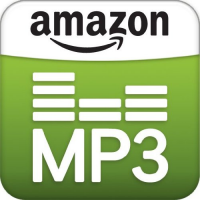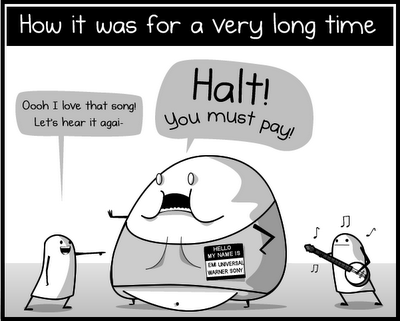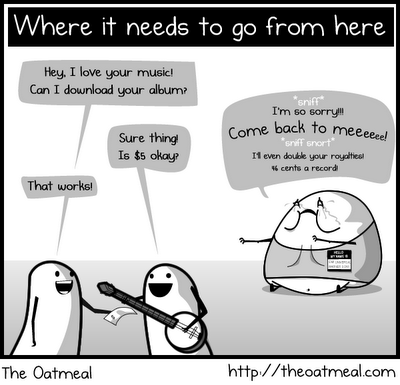The only trouble was that iTunes had this over a year ago.
Here's the problem. A feature like this requires a new license from the record labels, which Apple was way ahead of the curve to get. Amazon had a long tough negotiation after the fact, since the labels felt that they could get a better deal than they got from Apple. So now that just leaves Google's music service on the outside looking in, but chances aren't good that will happen, since the majors don't feel that Google does enough to prevent piracy to begin with.
The new Amazon Cloud Player is available in two tiers; 250 songs stored for free, or up to 250,000 for $24.99 a year. The trick is that anything bought from the Amazon store isn't counted in those numbers, and even if you purchased a song at a lower fidelity, all songs are now available at 256kb per second. And the catch? - it won't upload anything with copy protection, which includes just about everything from the iTunes store prior to 2009.
Catch 2 - If you have more than 250 songs already uploaded and he opt for the free version, it will delete any songs above the limite, although you can reimport them when you upgrade. Catch 3 - Amazon has now separated Cloud Music from their Cloud Drive service, so they're now separate subscriptions. That means that you can't store your files along with your music on a single cloud area.
Oh, and there's a catch if you're an artist waiting for a payday thanks to the new license fees extracted from Amazon. Forget about it, since you'll see pennies on the dollar. Most of licensing money goes directly to the labels bottom line and not the artist's.
-----------------------------------
Help support this blog. Any purchases made through our Amazon links help support this website with no cost to you.
You should follow me on Twitter for daily news and updates on production and the music business.
Check out my Big Picture blog for discussion on common music, engineering and production tips and tricks.








